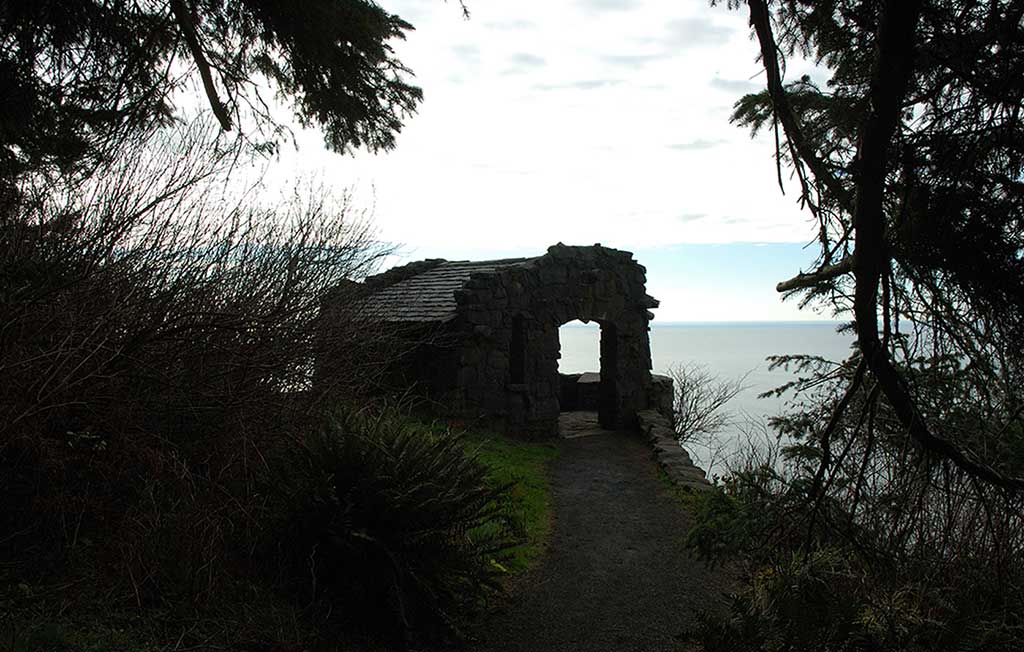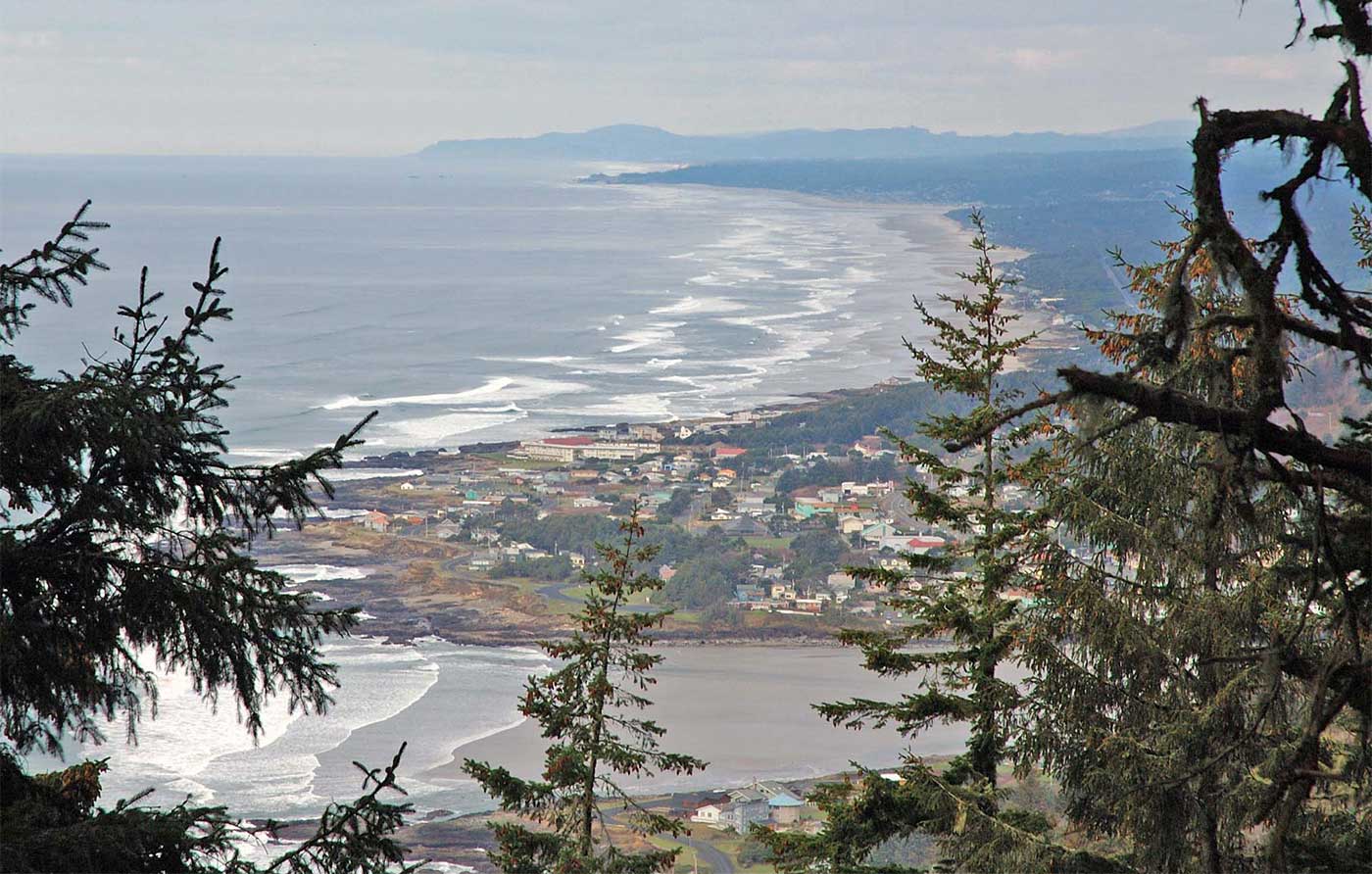The amazing Cape Perpetua scenic area overlooks the village of Yachats. Captain Cook discovered Cape Perpetua on March 7, 1778, during his third and final discovery voyage. He named it for St. Perpetua, a third-century female Christian martyr at Carthage (the patron saint for expectant mothers) on whose day the discovery was made.
The Cape Perpetua Scenic Area is heavily forested with coastal Sitka spruce, hemlock, and fir. It has tidal pools; unusual natural water features like Devil’s Churn, Cook’s Chasm, and Spouting Horn; a 600-year-old giant Sitka spruce (the Silent Sentinel of the Siuslaw) more than 185 feet high with a 40-foot base diameter; and other natural wonders. It holds shell middens and other archeological treasures from the coastal Native Americans who preceded Captain Cook’s arrival by many centuries. Visit the Cape Perpetua website here.
Atop the western edge of the Cape at about 800 feet above sea level is the West Shelter, a small stone and wood structure built by the Civilian Conservation Corps during the Great Depression. It protects visitors from strong winds while they enjoy the magnificent views – 35 miles of coastline to the south, 35 miles of coastline to the north, and 35 miles out to sea. The earth’s curvature is visible.

From the West Shelter the spirit of St. Perpetua keeps maternal watch over the Yachats area and its people. OCV takes inspiration from:
- Cape Perpetua’s mass, permanence, perspective, and views;
- the working men and women of an earlier time of economic challenge who built the West Shelter and other improvements;
- the travails of the Native Americans who inhabited this beautiful area for centuries
- the ultimate commitment to Christian charity of Cape Perpetua’s namesake.
